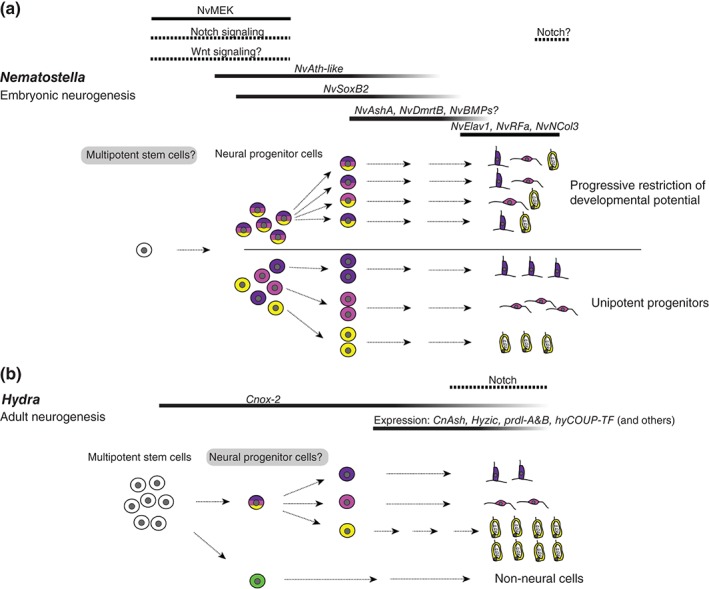Figure 3.

Neurogenesis in Nematostella embryos and in adult Hydra. (a) In Nematostella, a pool of dedicated neural progenitor cells (NPCs) gives rise to the three major classes of neural cells (sensory cells, ganglion cells, and nematocytes) during embryogenesis. Individual NPCs may give rise to different classes (upper part) or to only one class of neural cells (lower part). Note that the existence of these two types of NPCs is not mutually exclusive. NPCs might be derived from multipotent stem cells, but experimental evidence for such stem cells is missing. Bars above the figure depict the stages at which the indicated genes act during the progression of neurogenesis, according to functional data described in the text (except for NvNCol3 and NvRFa). Notch signaling has a role in regulating the number of NPCs and likely in the differentiation of nematocytes. (b) In adult Hydra, multipotent interstitial stem cells (i‐cells) give rise to the different classes of neural cells, but also to non‐neural cells. As for Nematostella NPCs, the developmental potential of individual i‐cells in vivo is not clear. The generation of neural cells may involve a dedicated NPC. Except for cnox‐2, there are no functional data for the indicated genes.
